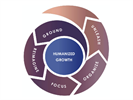Diana Marszalek 12 Sep 2018 // 8:35AM GMT

NEW YORK — Given the explosion in digital news, nearly 60% of journalists globally believe local media is doomed to extinction if it doesn’t adapt to the new world order, according to a new Ogilvy Media Influence Survey.
“They have an opportunity to survive and thrive because local news stories make them unique,” said Jennifer Risi, Ogilvy’s worldwide CCO. “But you have more syndication than ever before … and they can find themselves in trouble,” she said, adding that creating content that can’t be found elsewhere is considered key to local media’s long-term survival.
Risi, who heads Ogilvy’s media influence team, said the finding is a first in the five-year history of the survey, which, this year, is based on a 10-question poll of 363 journalists across North America and the Asia-Pacific and EMEA regions.
Whether journalists believe there is value in saving local media, however, depends on whom you ask.
42% of North American journalists believe local media is more important than ever, and an equal number believe it needs to change its operating model. In the EMEA region, however, just 15% of journalists see local media as more important than ever, compared with roughly 21% of Asia-Pacific journalists, although 63% believe it needs to adapt as compared with 70% of those interviewed in the Asia-Pacific region."
Other key findings include around 31% of surveyed reporters from all three regions believing that the most successful traditional media platform to adapt in an increasingly digital world is television.
Yet, the report also found that, between consolidation and digitalization of media, defining different mediums is increasingly difficult. Nearly 43% of respondents believe streaming services will be the top channels within five years, followed by news feeds and podcasts.
Risi said the findings show that big-name news outlets — the New York Times and CNNs of the world — are capturing larger audience share, meaning they also have more influence than ever, which is a key takeaway for communicators wanting to reach a range of target stakeholders.
“Communicators need to know the shift has happened. And if you can successfully navigate the media landscape today you will be in the driver’s seat to drive your own narrative and gain right mindshare with key stakeholders."


































.jpg)

















